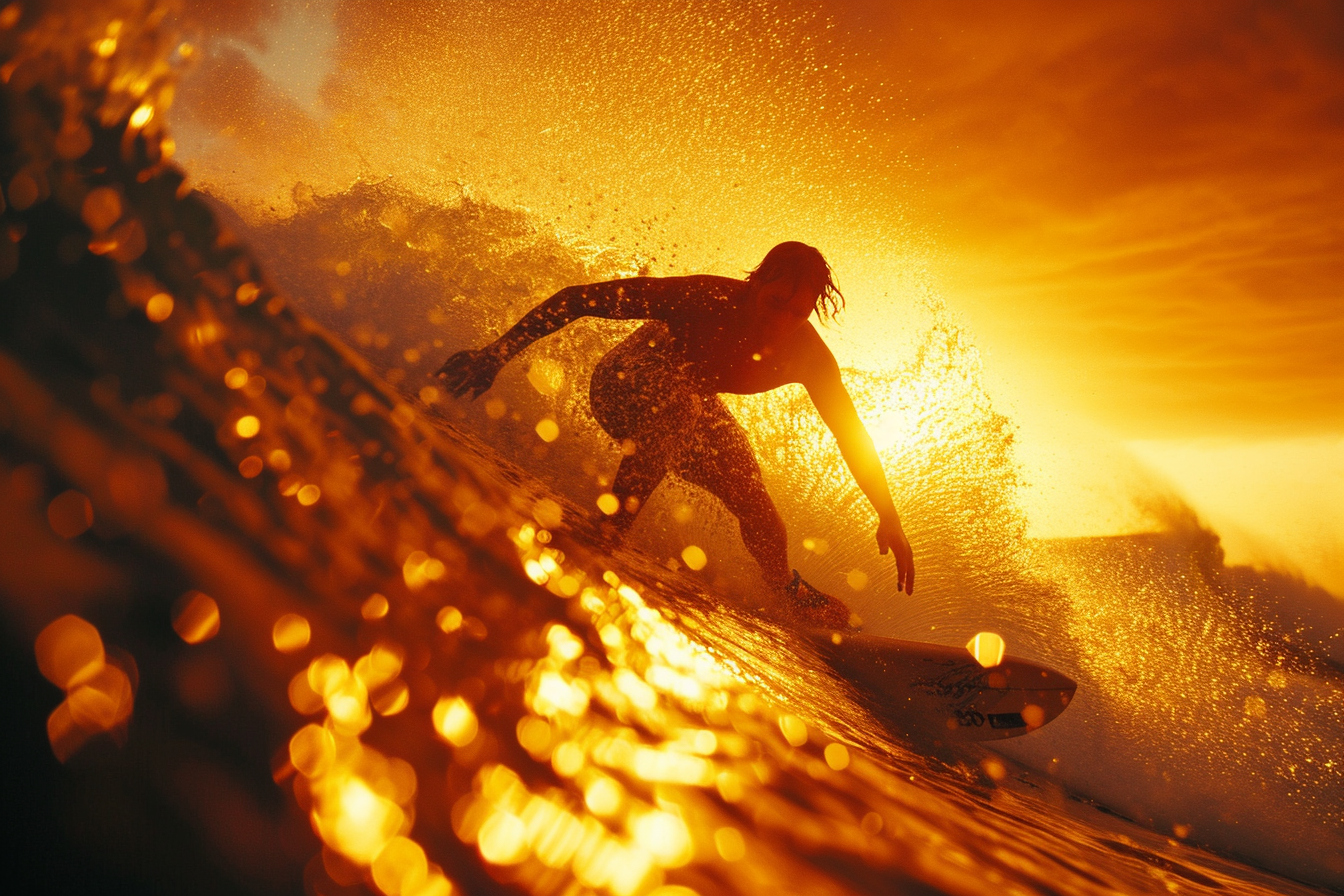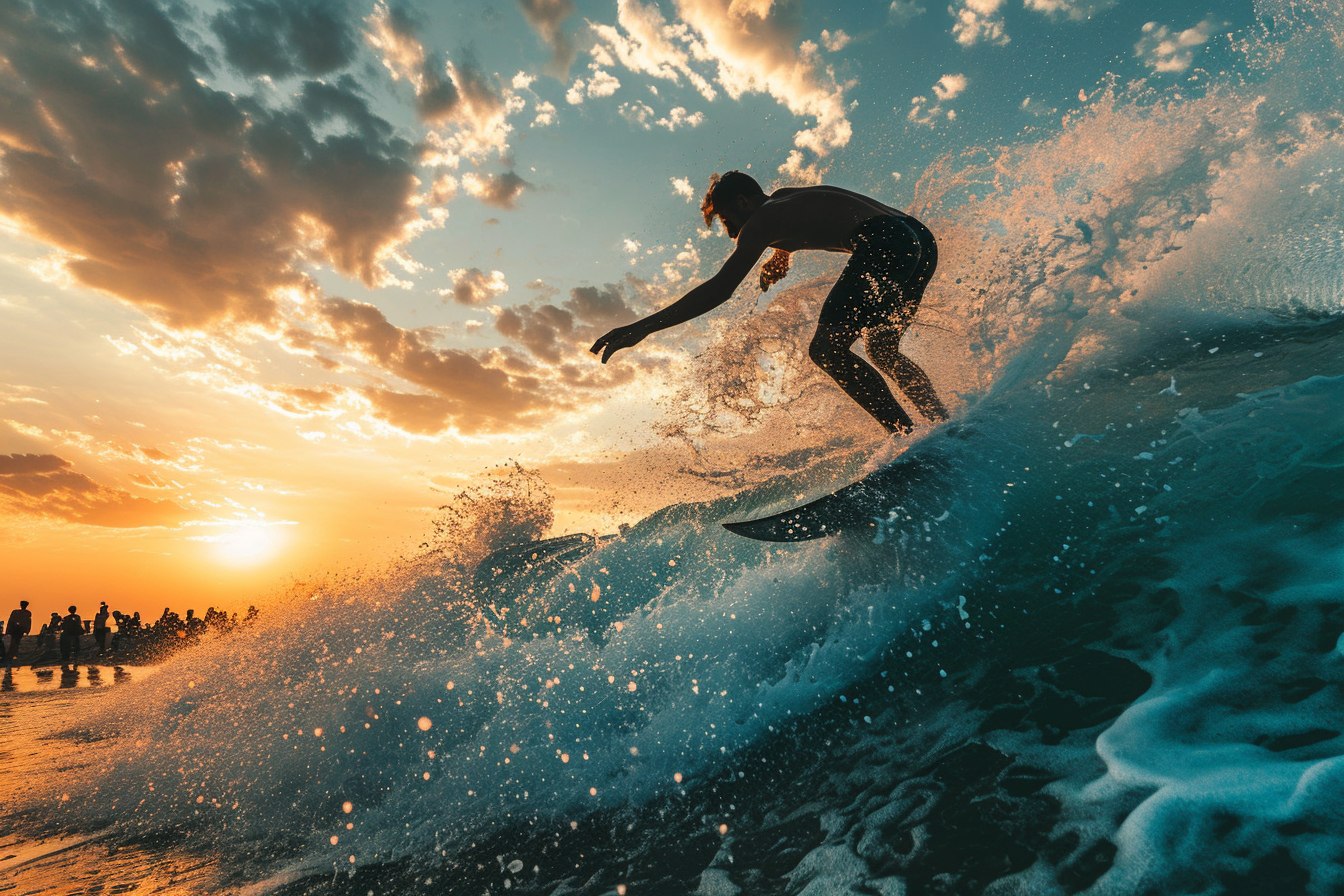Skimboarding, a sport that combines elements of surfing and skateboarding, is a captivating waterfront activity. Its origins trace back to the early 20th century when lifeguards would skim along the beach on flat boards. Since then, the sport has evolved into a competitive spectacle, with athletes showcasing their dexterity in negotiating waves and performing tricks.
Breaking down skimboarding
The equipment
Before delving into the heart of the competitive arena, it’s essential to understand the gear that makes skimboarding possible. The board itself is a central component—typically made of fiberglass or carbon fiber, these boards are smaller than surfboards, with no fins, allowing riders to glide effortlessly across the thin film of water on beaches or inland water spots.
The techniques
A vast array of techniques are the bedrock of any proficient skimboarder’s skill set. The
-
Drop: The initial step in skimboarding is the drop, where competitors sprint toward the shoreline, dropping their boards onto the thin water and jumping onto them without losing momentum.
-
The Wrap: Participants then direct their boards into an incoming wave (the wrap) to harness its energy for performing maneuvers, combining agility, balance, and timing to execute this effectively.
-
Tricks and Manoeuvres: From 360 shuv-its to big spins and airs, there is a plethora of tricks in a skimboarder’s armory. Mastery over these tricks is what distinguishes the novices from the pros.
The competitive landscape

Categories of events
Skimboarding events are generally partitioned into two main categories, each testing different aspects of a rider’s prowess:
-
Flatland Skimboarding: Conducted in shallower waters such as ponds, creeks, or wet sand, flatland skimboarding prioritizes technical tricks over wave riding. A showcase of dexterity, competitors execute flips, spins, and board passes on a flat surface.
-
Wave Riding Skimboarding: In contrast to flatland, wave riding competitions are held in oceanic environments, where athletes must catch and ride waves much like surfers, incorporating aerial maneuvers and powerful turns assessed by a panel of judges.
Judging criteria
Judges at skimboarding competitions look for a mixture of elements. These criteria often include:
- Difficulty of maneuvers: More complex tricks score higher points.
- Execution: The fluidity and precision in performing maneuvers.
- Wave Utilization: How effectively a rider uses the wave, including the length of the ride and the transitions between maneuvers.
- Style: A subjective element that refers to the rider’s flair and originality on the board.
Renowned competitions
There are several famed skimboarding contests that attract global attention.
- The Vic: Known formally as the Victoria Skimboards World Championship, this event has been pivotal in the sports growth.
- United Skim Tour (UST): A series of events that crowns the world’s best skimboarder, the UST is the premier tour for wave-riding competitions.
Training and preparation
Physical conditioning
Skimboarders invest considerable energy into physical conditioning. The sport requires explosive power, endurance, and flexibility. Activities like plyometrics, cardiovascular training, and yoga are often integral to an athlete’s regimen.
Technical drills
Beyond physical training, technical proficiency is forged through relentless practice of specific maneuvers and tricks. Many professionals utilize video analysis to deconstruct their performance and identify areas for improvement.
Mental conditioning
Resilience and the ability to stay calm under pressure are traits that top competitors cultivate. Many engage in mental exercises or work with sports psychologists to hone their mental edge.
Champions of skimboarding
Skimboarding has seen many exemplary athletes rise to prominence, setting new standards for excellence.
Legendary figures
- Bill Bryan: Known as "Beaker," he has claimed multiple titles and is respected for his pioneering style.
- Austin Keen: World-renowned for his wave riding prowess, Keen frequently features in highlight reels and has garnered a significant following.
- Amber Torrealba: A name that stands out in women’s skimboarding, Torrealba has made a mark with her progressive style and competitive successes.
Rising talents
The sport continues to witness the rise of fresh competitors who push the boundaries, improving upon the foundation laid by the legends and finding new ways to innovate.
The role of the community
Camaraderie among competitors
Despite its competitive nature, skimboarding is known for its strong sense of community. Athletes often share tips and encouragement, fostering an atmosphere of camaraderie and mutual growth.
Events and workshops
Local clinics and workshops conducted by experienced riders help to cultivate new talent, ensuring the growth of the sport. These events also serve as critical platforms for the exchange of ideas and techniques.
Insights into skimboarding techniques
To gain a deeper understanding of the expertise required in skimboarding, let us explore the nuances of certain maneuvers and techniques.
Technical execution
-
Frontside vs. Backside: Riders approach a wave frontside when facing it and backside when they have their back towards the wave. Each position offers distinct challenges and opportunities for tricks.
-
Air Moves: Gaining airtime requires precise timing and wave selection. Riders launch off the lip of the wave and may combine spins or flips before landing back on the water.
-
Board Control: Mastery over the skimboard, especially during rotational tricks, is a test of balance and fine-tuned movements. Athletes practice countless hours to achieve the finesse visible during competitions.
Future of skimboarding competitions

The evolution of skimboarding suggests an exciting future. Here are some predictions based on current trends:
Technological advancements
Advancements in board design and materials may lead to more dynamic maneuvers and even redefine what’s possible on a skimboard.
Inclusivity and expansion
Efforts to include more diverse backgrounds and age groups are likely to widen the pool of participants, enriching the sport with varied styles and techniques.
Media and sponsorship
Increased media coverage and sponsor interest could elevate the sport’s profile, making it more accessible and appealing to a broader audience.
As the sun sets on one competition, plans for the next are already on the horizon. The relentless pursuit of progression means that today’s champions may find themselves surpassed by tomorrow’s talent. Skimboarding’s trajectory is as unpredictable as the ocean waves it relies upon, promising a future that is both exhilarating and uncertain. The dedication of athletes, the innovation in techniques, and the strength of the community signals that skimboarding competitions will remain an enthralling spectacle within the world of extreme sports for years to come.

Leave a Reply